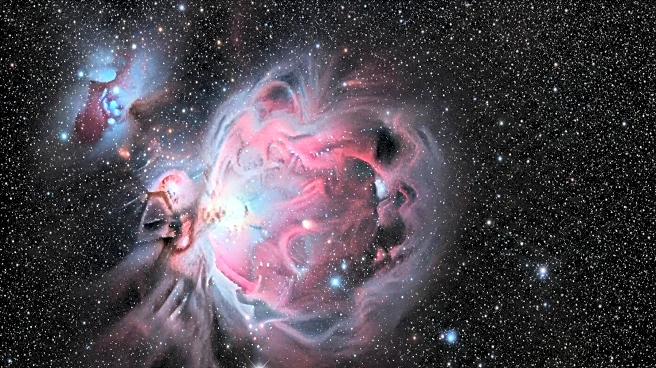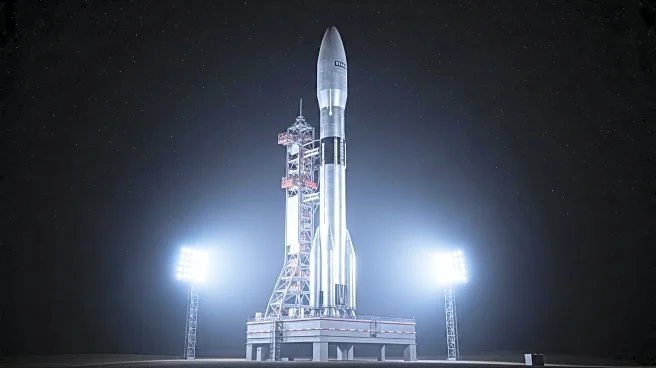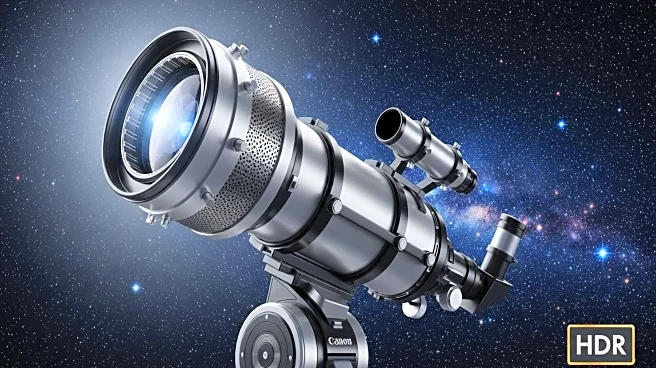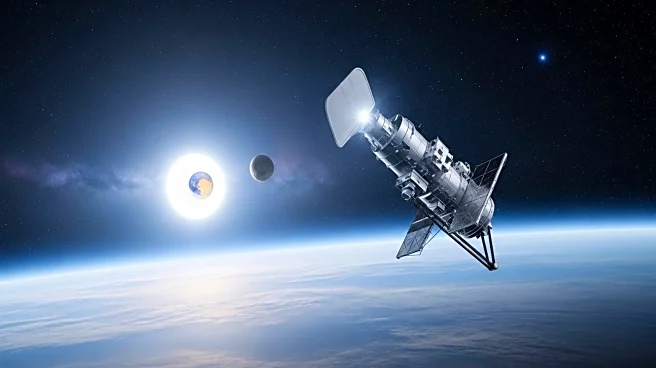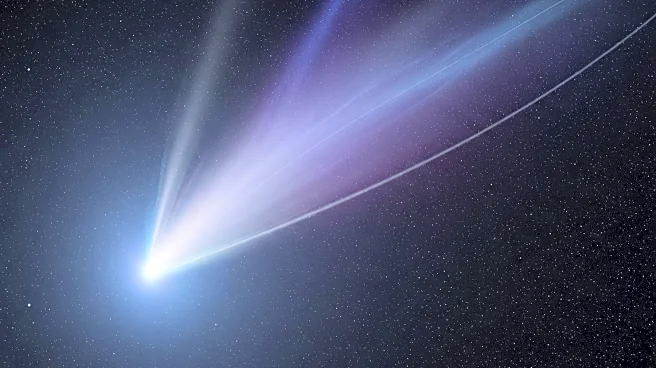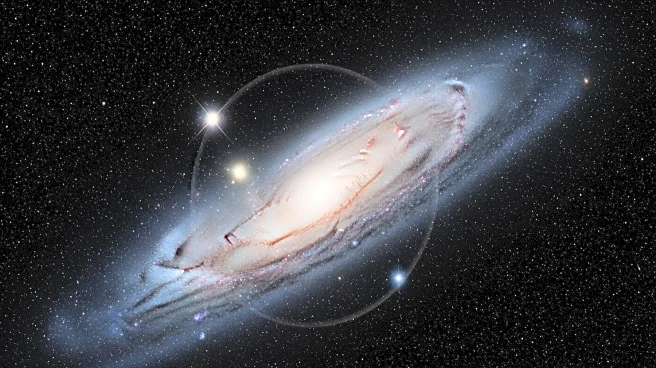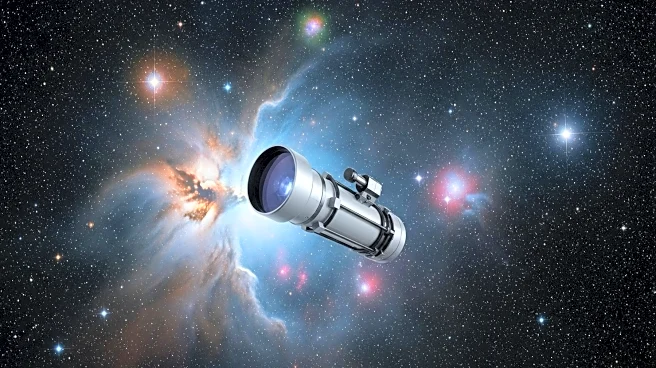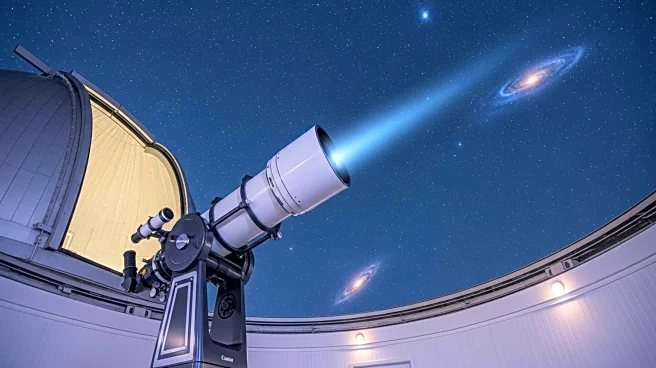What's Happening?
The Hubble Space Telescope has recently captured an image of the galaxy M82, known as the Cigar Galaxy, which is classified as a starburst galaxy. This type of galaxy forms stars at a rate ten times faster than the Milky Way, leading to significant outflows of gas and the development of super star clusters. These clusters contain hundreds of thousands of stars and shine much brighter than typical star clusters. M82 is located 12 million light-years away in the constellation Ursa Major. The galaxy's high activity has made it a frequent target for astronomers, including observations by the James Webb Space Telescope, which has provided new insights into its dynamics.
Why It's Important?
The observations of M82 are crucial for astronomers to understand the processes of star formation, stellar winds, and the evolution of super star clusters. By studying such energetic environments, scientists can gain insights into the conditions that lead to massive stellar nurseries and their development over time. This knowledge contributes to the broader understanding of galaxy formation and evolution, impacting theories about the universe's structure and the lifecycle of stars.
What's Next?
Continued observations of M82 by telescopes like Hubble and James Webb will further enhance the understanding of starburst galaxies. These studies may lead to discoveries about the mechanisms driving rapid star formation and the role of super star clusters in galaxy dynamics. The ongoing research could influence future astronomical models and theories, potentially leading to new technologies or methods for observing distant galaxies.
Beyond the Headlines
The study of M82 also touches on the ethical considerations of space exploration and the allocation of resources for scientific research. As technology advances, the ability to observe distant galaxies raises questions about prioritizing scientific endeavors versus addressing immediate terrestrial challenges. The cultural impact of such discoveries can inspire future generations to pursue careers in science and technology, fostering innovation and exploration.

